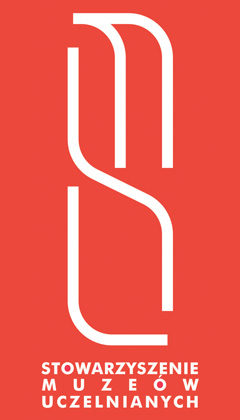Jagiellonian University Museum – Collegium Maius
ul. Jagiellońska 15
31-010 Kraków
Tel. (12) 663 15 01 / (12) 422 05 49
collegiummaius.info@uj.edu.pl
www.maius.uj.edu.pl
Admission charges (please see the museum’s website)
November – March:
Mondays – Fridays: 10 am – 2.20 pm
Saturdays: 10 am – 1.30 pm
April – October:
Mondays, Wednesdays, Fridays: 10 am – 2.20 pm
Tuesdays, Thursdays: 10 am – 5.20 pm
Saturdays: 10 am – 1.30 pm
For further details of visits to particular sections of the museum, please check the website.
Director: Prof. Krzysztof Stopka
Deputy Director: Joanna Ślaga PhD
Staff: Maciej Kluza PhD, Marcin Banaś MA, Beata Frontczak MA, Maria Natalia Gajek MA, Grażyna
Grzechnik-Correale MA, Anna Jasińska PhD, Róża Książek-Czerwińska MA, Anna Lohn MA, Małgorzata Malkiewicz BA, Joanna Sławińska MA, Małgorzata Taborska PhD, Ewa Wyka PhD, Katarzyna Zięba MA, Janusz Kapik, Janusz Kozina MA, Jacek Kumański, Bogusław Sławiński MA, Grzegorz Zygier MA, Marcin Bojda MA, Natalia Bahlawan, PhD, Anna Bahlawan MA, Magdalena Czarnecka MA, Desisława Christozowa- Gurgul MA, Justyn Jędraszewski, Katarzyna Kluza, Wioletta Kolbusz-Lasa MA, Łukasz Pieróg BA, Paweł Siemianowski, Karolina Wawok MA, Jolanta Pollesch MA, Robert Adamczyk, Michał Bosek MA, Agata Łoboda MA, Magda Naruszewicz MA, Beata Skalmierska MA, Stanisław Tarnowski, Żaneta Kubic PhD, Rita Kopczyńska MA, Joanna Czpak MA, Monika Kubik MA, Łukasz Lebioda MA, Jowita Małek MA, Grażyna Drożdż, Wanda Szopa, Danuta Tarko, Jarosław Juszczak, Marzena Aletańska-Sitko, Barbara Cygan, Marcin Dusza, Stanisław Idzik, Zofia Kałuża BA, Kazimierz Kostrz, Marcin Madej, Stanisław Markut, Janusz Migas, Krzysztof Mroczka, Jan Nęcek, Krzysztof Setkowicz, Paweł Śliwa, Artur Wójcik MA, Piotr Wojtaszek, Robert Wścisłoy
In 1946, the University Senate decided to established the Museum of the Jagiellonian University (UJ). Alongside the Jagiellonian Library and the Jagiellonian University Archives, it is one of a group of entities within the university that is independent of a faculty. Its organization and tasks are defined under separate regulations. The UJ Museum is one of the largest university museums in Poland. It origins date back to the Archaeological Cabinet founded by Prof. Józef Łepkowski in 1867, which is located in Collegium Maius – the oldest university building. It is one of the few such mediaeval buildings in Europe to have survived to this day, and it still remains a place for learning, debating, carrying out historical research hosting some of Kraków’s most promiment cultural events. For many years, the university and its legacy, the museum and its collection, have become an important part of Kraków’s cultural landscape. The museum’s collection is related to to the history of Poland’s oldest university, the history of science, and the legacy of its professors. The collections include more than 2,000 scientific instruments, including exhibits from most scientific fields: astronomy, geodesy, navigation, physics, mathematics, chemistry, biology, weights and measures. The collection is based on instruments which in the past were used in university laboratories, including the first Faculty of Physics established in 1778, the Astronomical Observatory, the first Department of Chemistry (1782) to name but a few. The most valuable objects are the astronomical instruments dating from the 11th to the 19th centuries, globes (16th–19th centuries), chemical receptacles from the end of the 18th century, and a set of cryogenic instruments (from the 2nd half of the 19th century). The Museum of the Jagiellonian University’s collection of paintings consists of more than 1,400 pictures, the oldest dating from the end of the 15th century. The core of the collection is a series of portraits of professors of the oldest Polish university: 28 portraits of professors from the early modern period and from the 19th and 20th centuries. It is the oldest and largest collection of its kind in Poland. The collections of sculptures, prints, handicrafts, and an impressive collection of photographs are also very valuable and diverse. Part of the exhibits are on permanent display in 20 rooms and are thematically linked to the history of the university and the academic community. The former library, professors’ common room (Stuba Communis) which served as a dining room and the University Treasuries are among the interiors that have been reconstructed. The ground floor area of the building, which houses the former reading rooms (called lektoria), is where temporary and interactive exhibitions, which have been organized since 2000, are held. The Collegium Maius, which is above all the seat of the Museum of the Jagiellonian University, still remains one of the university’s official buildings. It is where the University Senate holds its regular meetings; it is a venue for university promotions, meetings with prominent guests, and academic conferences. It is also where the inauguration of the new university year takes place.
Joanna Ślaga MA














